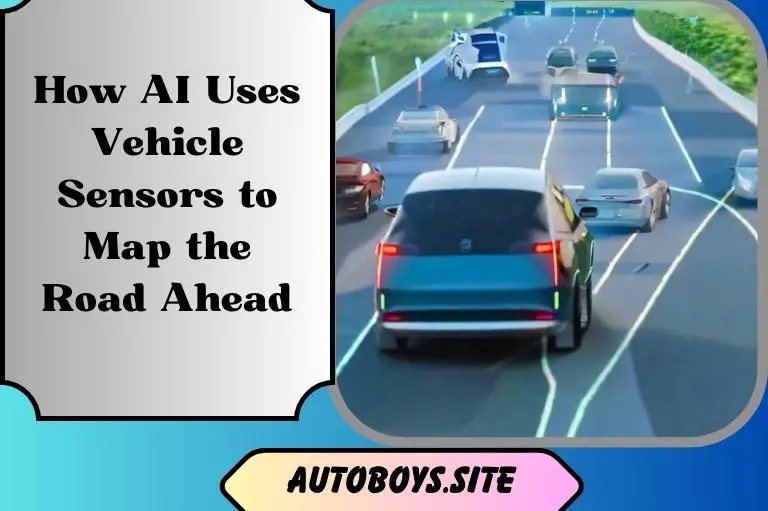5G and Autonomous Vehicles: A Match Made for the Future
5G wireless networks are being deployed around the world, and self-driving cars are already cruising our roads. Separately, 5G and autonomous vehicles are exciting technologies with enormous potential to transform our lives. But together, they are an unstoppable force that will revolutionize transportation and mobility.
5G provides the speed, reliability, and bandwidth to support advanced connectivity between vehicles, infrastructure, and everything around them. Autonomous vehicles thrive on real-time data and constant communication to safely and efficiently navigate roads. It’s a perfect match – 5G is the network that autonomous vehicles have been waiting for.
With 5G and self-driving cars teaming up, the possibilities for innovation are endless. They will make transportation greener, safer, and more accessible for all. The self-driving future is bright, and 5G will help it reach its full potential. The roads of tomorrow are being built today by this dynamic duo, opening up a world of opportunity on the journey ahead. The future of transportation is autonomous and connected, and it’s going to be an exciting ride.
How 5G Enables Real-Time Communication for Autonomous Vehicles
5G is the key to unlocking the full potential of autonomous vehicles. With its ultra-fast speeds, low latency, and ability to connect massive amounts of devices at once, 5G paves the way for real-time communication between vehicles and their environment.
V2X Communication
5G enables autonomous vehicles to securely and instantly share data with other vehicles (V2V), infrastructure (V2I), and everything (V2X) around them. This constant data exchange provides autonomous cars with a real-time, 360-degree view of their surroundings so they can navigate safely and efficiently. For example, if one autonomous vehicle detects icy road conditions ahead, it can alert all nearby autonomous vehicles so they can adjust their speed and handling accordingly.
Faster Decisions
5G’s high bandwidth and minimal delay mean autonomous vehicles can collect huge amounts of data from onboard sensors and cameras, process it instantly using AI and cloud computing, and make split-second driving decisions. This allows autonomous cars to react faster than humanly possible in emergencies.
Software Updates Over the Air
5G networks make it possible to send wireless over-the-air (OTA) updates to autonomous vehicles. Rather than requiring a trip to the dealer, software updates, security patches, and new features can be delivered directly to vehicles on the 5G network. OTA updates ensure that autonomous cars always have the latest technology and functionality as soon as it’s available.
With 5G paving the way for real-time connectivity, faster processing, and convenient OTA updates, autonomous vehicles are poised to transform transportation and make our roads safer, less congested, and more sustainable. The future is autonomous, and 5G will help get us there.
Improving Safety of Autonomous Vehicles With 5G
The future of transportation is autonomous and connected, and 5G will be crucial in enabling vehicles to communicate with each other in real-time. With 5G, autonomous vehicles can share data about their position, speed, and destination to coordinate maneuvers and avoid collisions.
5G’s high bandwidth and low latency mean vehicles can send and receive critical information instantly. This drastically decreases the risk of accidents from delayed responses or connectivity issues. The 5G network also allows for expanded automated systems that focus on safety aspects for controlling a vehicle.
Together, self-driving vehicles and 5G have the potential to vastly improve safety conditions across the transportation system. 5G-connected vehicles that can communicate with one another and surrounding infrastructure will transform our roadways into intelligent transportation networks. Vehicles will be able to automatically react to changing conditions in a coordinated fashion to prevent collisions, ease traffic, and optimize travel routes.
5G will make autonomous vehicles smarter and safer by enabling them to share data in real-time about road conditions, traffic, and emergency events. With 5G, vehicles can detect potential hazards faster and maneuver quickly to avoid them. They can also receive updates about traffic and roadwork to automatically adjust their route for the fastest, most efficient trip.
The synergies between 5G and autonomous vehicles are leading to a transportation revolution. 5G provides the connectivity for vehicles to communicate and collaborate, supporting new levels of automation and intelligence on our roads. Together, 5G and self-driving vehicles are driving the future of mobility.
Increasing Efficiency of Autonomous Vehicles With 5G
Autonomous vehicles powered by 5G will transform transportation as we know it. With 5G’s ultra-fast speeds, low latency, and massive connectivity, self-driving cars can communicate with each other in real-time. This allows them to travel more efficiently and safely at higher speeds.
5G enables autonomous vehicles to access data from smart city infrastructure like traffic lights, signs, and lane controls. This helps the vehicles anticipate traffic conditions and choose the optimal route to a destination. 5G also allows autonomous cars to connect, sharing sensor data and coordinating their movements. For example, platoons of autonomous trucks can travel closely together at high speeds, reducing drag and improving fuel efficiency.
Multi-access edge computing brings cloud computing capabilities closer to where data is generated and consumed. This means autonomous vehicles can process data locally in near real-time, without needing to send it to a remote data center. The vehicles become smarter and more responsive, able to react quickly based on their local environment. With 5G and edge computing, autonomous cars have the potential to eventually reduce traffic accidents caused by human error.
The future looks bright for autonomous vehicles and 5G. As 5G coverage expands, self-driving cars will get smarter, greener, and safer. 5G connectivity and edge computing will enable cars to communicate, coordinate, and navigate with minimal latency. Autonomous vehicles and 5G are innovating together, advancing Intelligent Transport Systems to create smarter cities and transportation networks. The road ahead is an exciting one!
The Role of 5G in Vehicle-to-Vehicle (V2V) Connectivity
Vehicle-to-vehicle (V2V) connectivity is essential for autonomous vehicles to communicate with each other and safely navigate roads. 5G wireless technology enables fast, reliable V2V connectivity that will transform autonomous driving.
How 5G Supports V2V Connectivity
With 5G, autonomous vehicles can broadcast their location, speed, and direction to nearby vehicles with ultra-low latency. This allows cars to create a real-time map of surrounding traffic and instantly adapt to changes. 5G’s high bandwidth also means vehicles can share huge amounts of data, like live video feeds.
Autonomous vehicles using 5G V2V connectivity will be able to travel safely at high speeds with minimal distance between cars. They can act as a coordinated group, accelerating and breaking in unison based on shared information. This could increase road capacity and reduce traffic.
5G provides the speed, reliability, and security needed for autonomous vehicles to communicate critical information and make split-second driving decisions. As more 5G networks and autonomous vehicles emerge, V2V connectivity will enable a transportation ecosystem where self-driving cars move seamlessly and collectively.
The potential benefits of 5G-enabled autonomous vehicle connectivity are enormous. In addition to improved safety, reduced traffic, and decreased environmental impact, 5G V2V systems could enhance mobility for elderly and disabled populations. They may also generate valuable data to help cities better manage infrastructure and resources.
5G is the connective tissue that will bind autonomous vehicles into an intelligent network. By allowing cars to share data in real-time, 5G paves the way for autonomous vehicles to become a collaborative and transformative force in transportation. The partnership of 5G and self-driving cars could revolutionize the way we get from point A to point B.
The Future of Autonomy and Connectivity
The future of autonomous vehicles depends on lightning-fast connectivity, and 5G networks are leading the charge. With 5G, autonomous cars can communicate in real-time and access huge amounts of data from the cloud. This means vehicles will be safer, smarter, and able to navigate roads more efficiently.
Safer Driving Through Vehicle-to-Everything Communication
5G enables vehicle-to-everything (V2X) communication, allowing autonomous cars to wirelessly exchange data with other vehicles, infrastructure, and pedestrians. V2X can alert vehicles to hazards like emergency braking or slippery roads ahead. It can also communicate with traffic lights and signs to optimize traffic flow. This constant data sharing will make autonomous driving much safer.
Smarter Vehicles With Edge Computing
5G’s high bandwidth and low latency enable edge computing, which brings cloud computing power closer to vehicles. Autonomous cars will leverage edge computing to quickly analyze sensor data and make driving decisions. They can tap into an edge server’s processing power for complex tasks like obstacle detection or route planning. With edge computing, autonomous vehicles become smarter and more capable.
Improved Mobility Through Coordination
5G connectivity will allow autonomous vehicles to coordinate with each other for more efficient mobility. Cars can travel closely together in coordinated “platoons” at optimal speeds, reducing traffic and congestion. They can also share data on traffic, weather conditions, and road closures to dynamically update routes and travel times. This level of coordination will make transportation faster, greener, and more productive.
The future is bright for autonomous vehicles and 5G. As networks expand and technology improves, vehicles will become increasingly connected, intelligent, and autonomous. 5G is the catalyst enabling a new era of safer, smarter, and more efficient transportation. The road ahead is filled with promise and potential.
Conclusion
The future of transportation is autonomous and connected, and 5G will be the technology to enable it. With 5G powering their systems, autonomous vehicles will have the capabilities to transform how we get from place to place. Drivers can sit back, relax, and enjoy the ride while the vehicle seamlessly navigates traffic. Cities and roadways will become more efficient and safer as autonomous vehicles communicate with infrastructure and each other. The age of the fully autonomous vehicle is fast approaching, and 5G will be the fuel to accelerate us into this exciting new era of transportation. The road ahead is bright, so sit tight, the future is driving itself.







